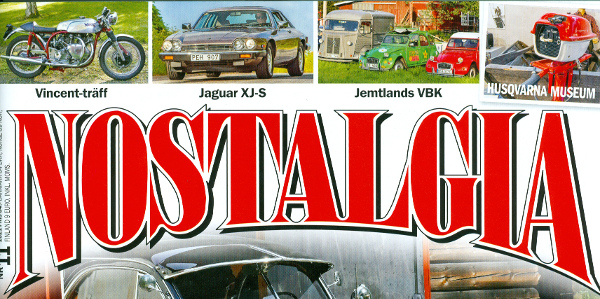
When the club had its 25th anniversary at the same place, Hökensås Camping, it was noticed with a report in Allt om MC, the same publisher as Nostalgia. That's why it became natural to have a sequel like this 25 years later. Mats Andreasson took his camera with him and came to visit.
| Original text in swedish | |
| Übersetzung ins Deutsche |
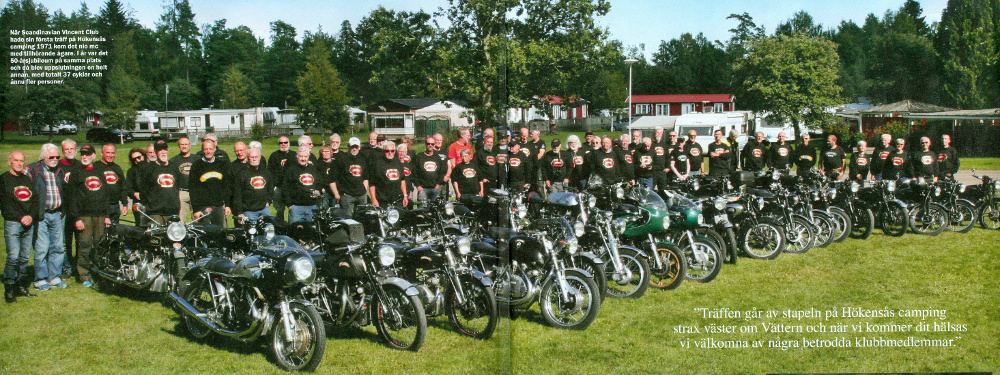
The word superbike is usually used about motorcycles that are not only terribly fast but also large, comfortable, easy to ride and dependable - all at once. Some say that the Honda 750 from the beginning of the 70's was first in this category. But there was actually a superbike already 20 years earlier.
Join the Vincent meeting and find out!
- This year it is 50 years since the Scandinavian Vincent Club was formed, says Jan Stigsén who is treasurer and webmaster of the club. We intend to celebrate this with a big anniversary meeting in the same place as our very first meeting in 1971.
- Of course, some of both the motorcycles and the people will probably be the same as at the meeting 50 years ago, so the news value may not be so great! But maybe it can still be something for you at Nostalgia Magazine to write about?
Now, the news value happens not to be of top priority for us at Nostalgia - we leave that to the daily press and the weekly newspapers.
On the other hand, the information that several participants have been in the picture for 50 years feels very interesting to us. A motorcycle brand that manages to hold on to its fans for so long, well that must be something really special, right?
So we immediately say yes and load the camera in the Volvo 210 Service Duett and take off to the Vincent meeting.
The big question
The meeting takes place at Hökensås camping just west of Lake Vättern and when we get there weare welcomed by some trusted club members. Like Roland Magnusson who was the club's first chairman, Henry Riedel who was treasurer for 45 years and Sivert Bomberg who is the club's renovation expert. And then Jan Stigsén who invited us.
We sit down at one of the cabins at the campsite, and with the occasional rumbling motorcycle as accompaniment, the Vincent gang makes a joint attempt to answer the big question - namely what is so special about Vincent that they still have the enthusiasm after 50 years. And to explain it, they need to start from the beginning. Like this:
When the club was formed around 1970, the interest in riding a motorcycle had just gained momentum after being virtually non-existent for ten years. This meant that the supply of newmotorcycles was quite meager. The fastest and toughest among the models to choose from were some English parallel twins that vibrated quite badly and Honda's new 750-four which so far was available only as a photo!
But when some of these enthusiasts looked back in the history of motorcycles, to their surprise theyfound a motorcycle that surpassed all the new ones, and that with flying colours. It was called The Vincent and was an English V-twin of 1,000 cc. Although production had stopped as early as in the 1950s, even in 1970, Vincent was the fastest standard motorcycle ever built. With a top speed of over 200 kilometers per hour, of course they were impressed!
Superior in many ways
Although it was not just the speed that surprised. Getting your hands on a Vincent around 1970 was not that easy - not many had been built, and only a small part of them were sold in Sweden. But these diehards somehow managed to get hold of one specimen each, and when they got thebikes running, they so on realized that they were also comfortable, dependable and road safe. And when the motorcycles ever needed to be repaired, it also turned out that they were surprisingly easy to maintain, thanks to some shrewd design solutions.
- All this combined, of course, invited to a lot of riding. There were those who made long journeys to different parts of the world with their Vincent machines covering tens of thousands of kilometers a year. And the more you rode, the more enthusiastic you became, says Henry Riedel.
In the UK, a Vincent club had been formed as early as the 1940s, when the motorcycles were still being manufactured, and some of the new Vincent owners in Sweden joined. And when they discovered through that club that there were more Swedes with the same interest, it was close at hand to form their own club to be able to meet and exchange experiences.
- At the first meeting here at Hökensås in 1971, we were seven motorcycles, Henry remembers. But the interest quickly grew and today we are about 150 members with even more motorcycles.
Most Vincent machines were built during a few intense years in the late 40's and early 50's. During that period, there were mainly three models that were popular, and they are also the most common in the club. The Rapide and the Black Shadow both have the large V-twin of 1,000 cc. Rapide is the standard model while Black Shadow is a sportier version. In addition, there is a one cylinder variant called the Comet with a displacement of 500 cc.
But apart from the engine, they are all quite similar, comfortable, with a high level of build quality and a very special type of frame.
Norvin and Egli-Vincent
The great thing about Vincent is not only the impressive engine but also that it is a motorcycle where all parts work together in a good and functional way. But in most contexts, there are people who think they can make the good even better, and the Vincent world is no exception. So over time, a couple of typical custom builds based on Vincent engines have emerged.
- In England, many people thought that the best motorcycle frame was a cradle frame from Nortoncalled Featherbed, says Jan Stigsén. It was intended for single or parallel twins, so getting a Vincent V-twin into that frame really required a shoe horn. But there were those who succeeded and the result was usually called Norvin after the two contributors. My bike is such a one, a build in café racer style with a Rapide engine pressed into a Norton frame from 1963. And there are actually some more in the same style in Sweden.
The Norvin builds are thus welcome in the Vincent Club, despite the fact that they have a different framework. This also applies to the next special, namely Egli-Vincent, which has a frame designed by the Swiss Fritz Egli in the 60's.
- It's the kind I have, says Henry Riedel. I visited Fritz Egli down in Switzerland in 1969 and then ordered a frame from him. The rest I looked up in different places here at home and then built the bike on my own. Yes, it is the one I have ridden here today. In total it has covered some 120,000 km.
Superbike No 1
At this point, we from Nostalgia have begun to understand roughly what this Vincent thing is all about. That so many stuck to the brand from the beginning was probably due to the fact that the Vincent motorcycles were good at so many things at one time. They were not only the fastest in the world but also comfortable, easy to ride and dependable. To use a word that was invented much later, Vincent was the essence of a superbike. And as long as you do not find a better one, it is clear that you stick to your bike, even for 50 long years.
So we thank for the chat and end our visit by taking a turn with the camera among the total of 37 Vincent machines at the meeting. What we unfortunately can not reproduce here in the magazine is the sound! Neither the powerful rumble from the 1,000 cc machines nor the dull thump from the single-cylinder 500cc. But we hope to be able to convey some of the shapes, details and the exciting designs with the help of the pictures. And if you would like to know more about Vincent and the club, Henry, Jan and the others promise to do everything to answer your questions. You can find them at vincenthrd.se!
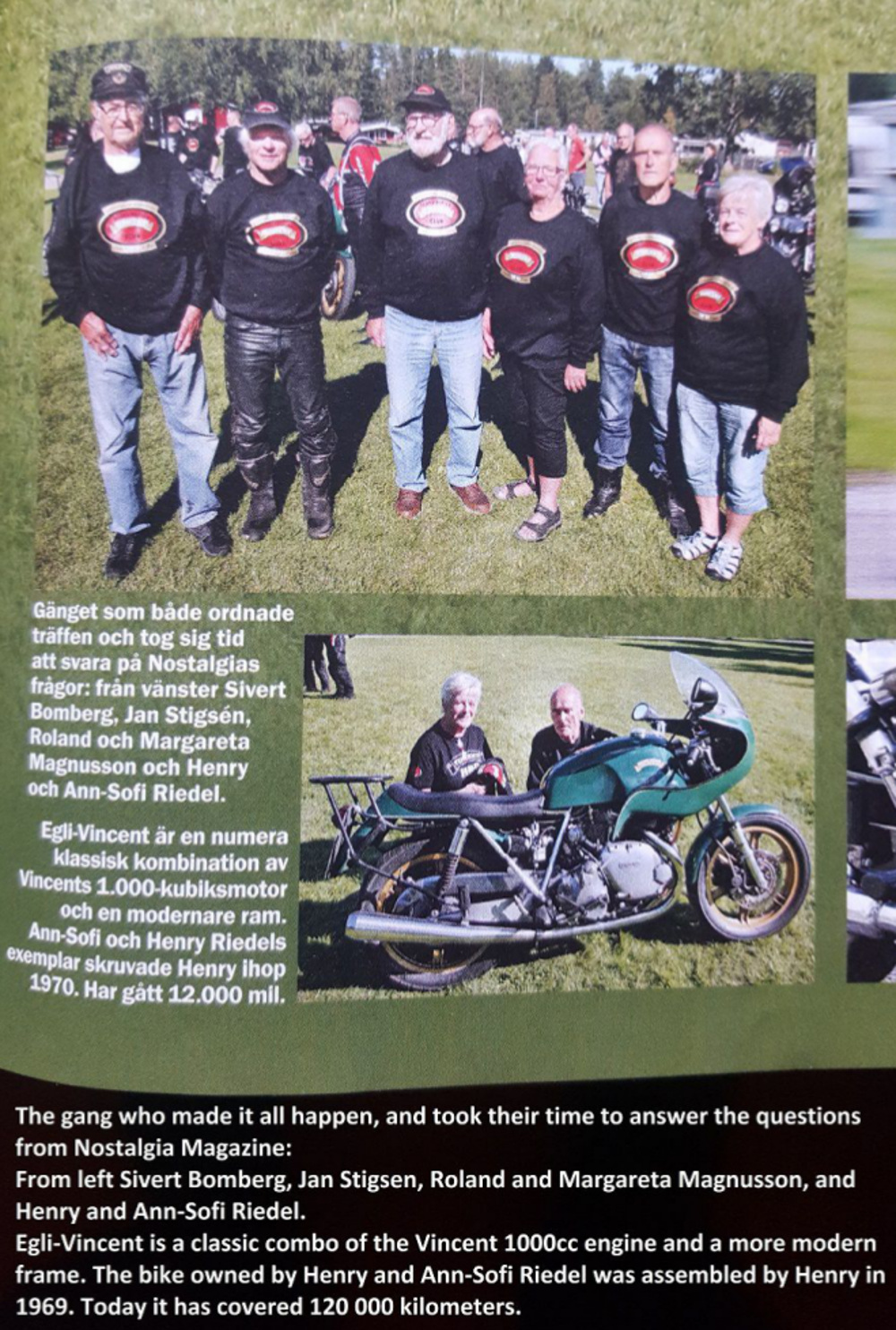
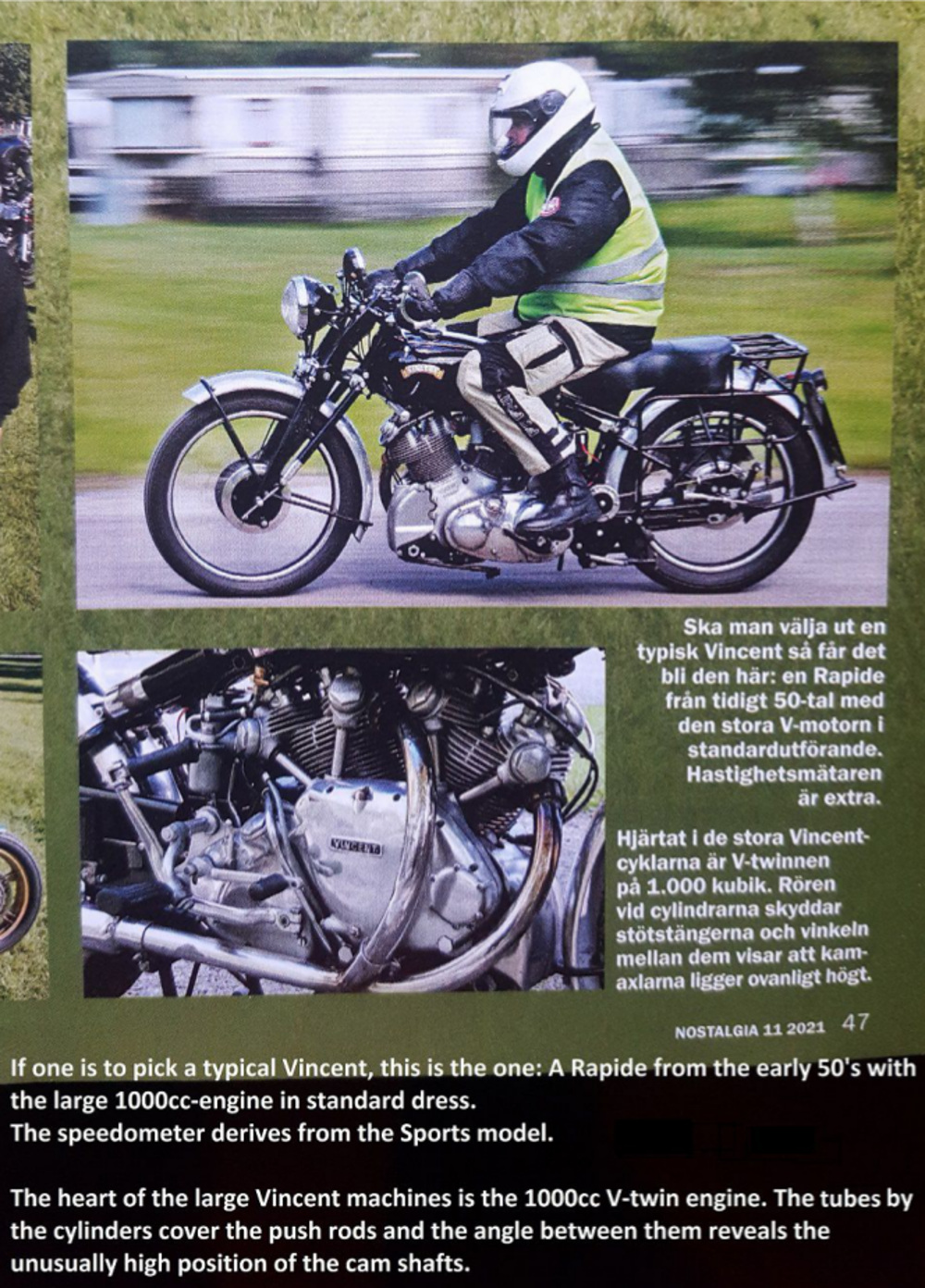
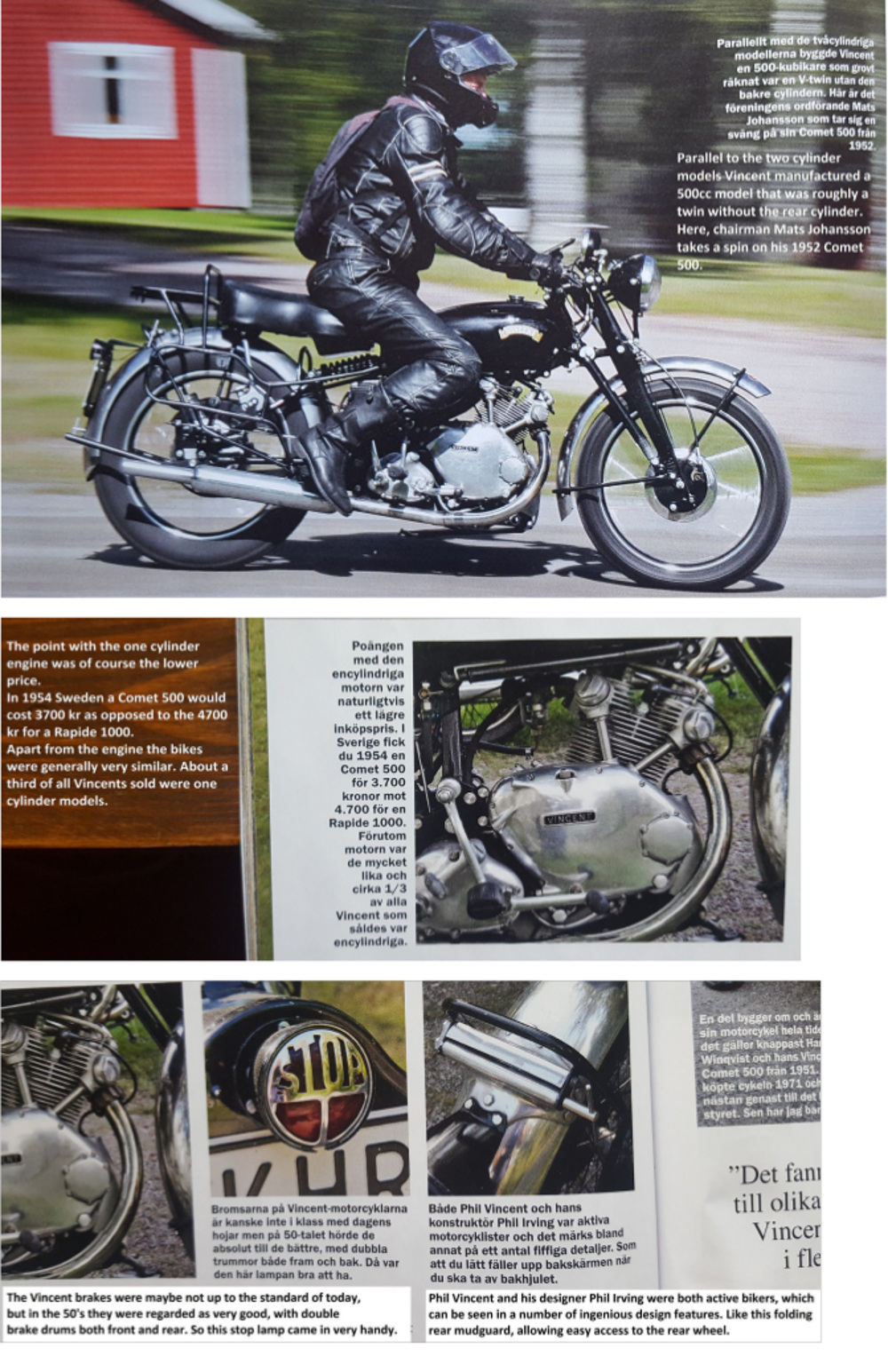
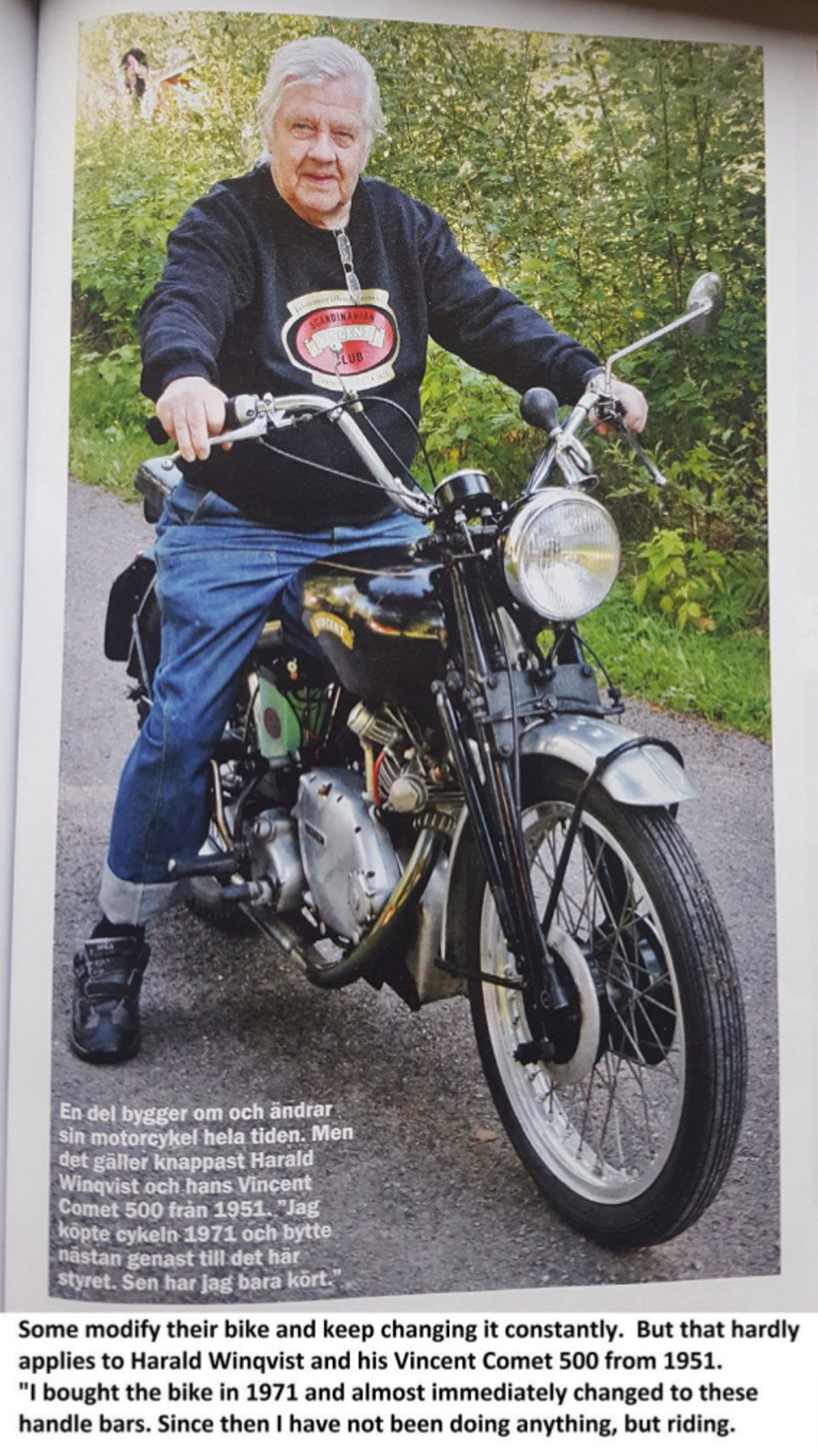
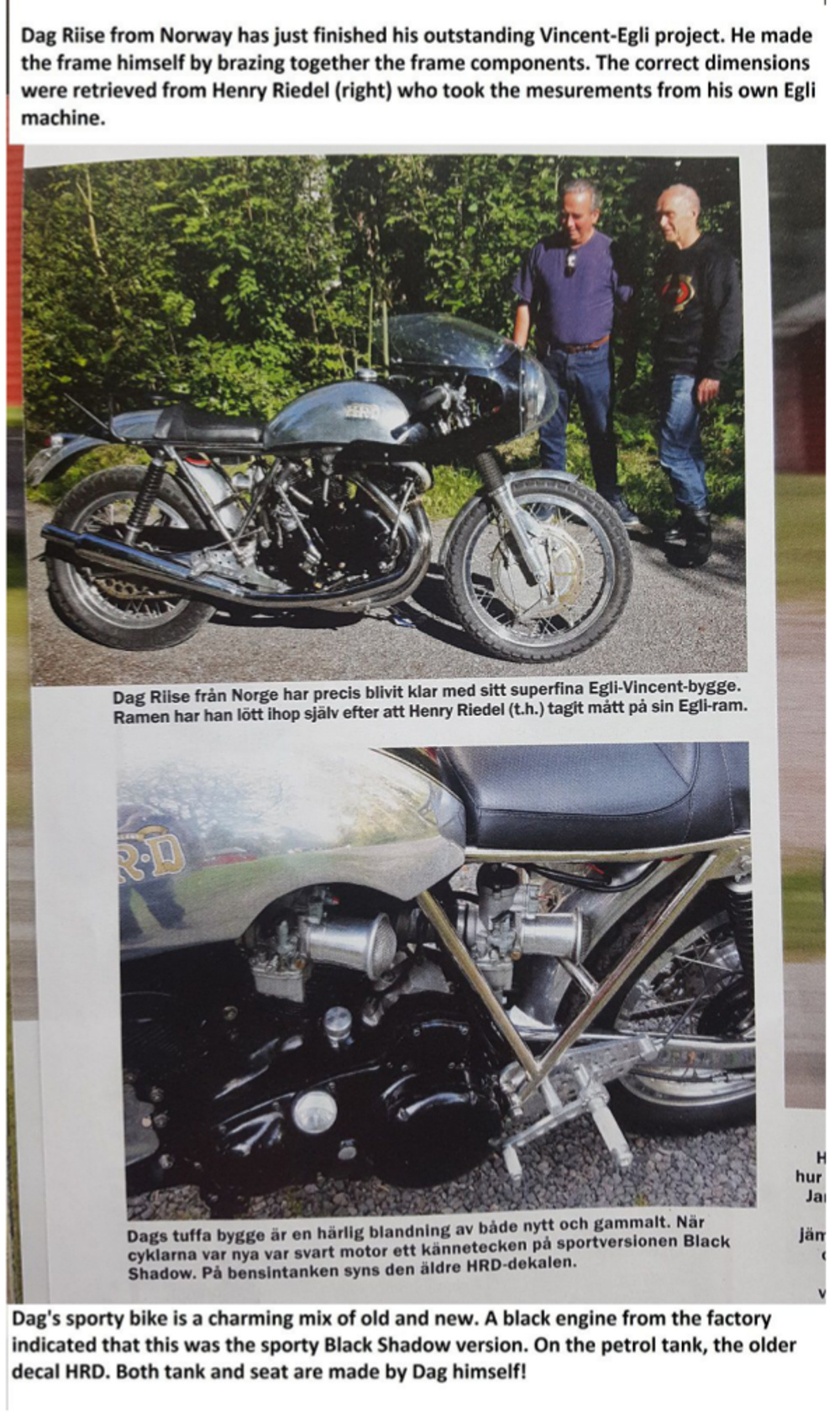
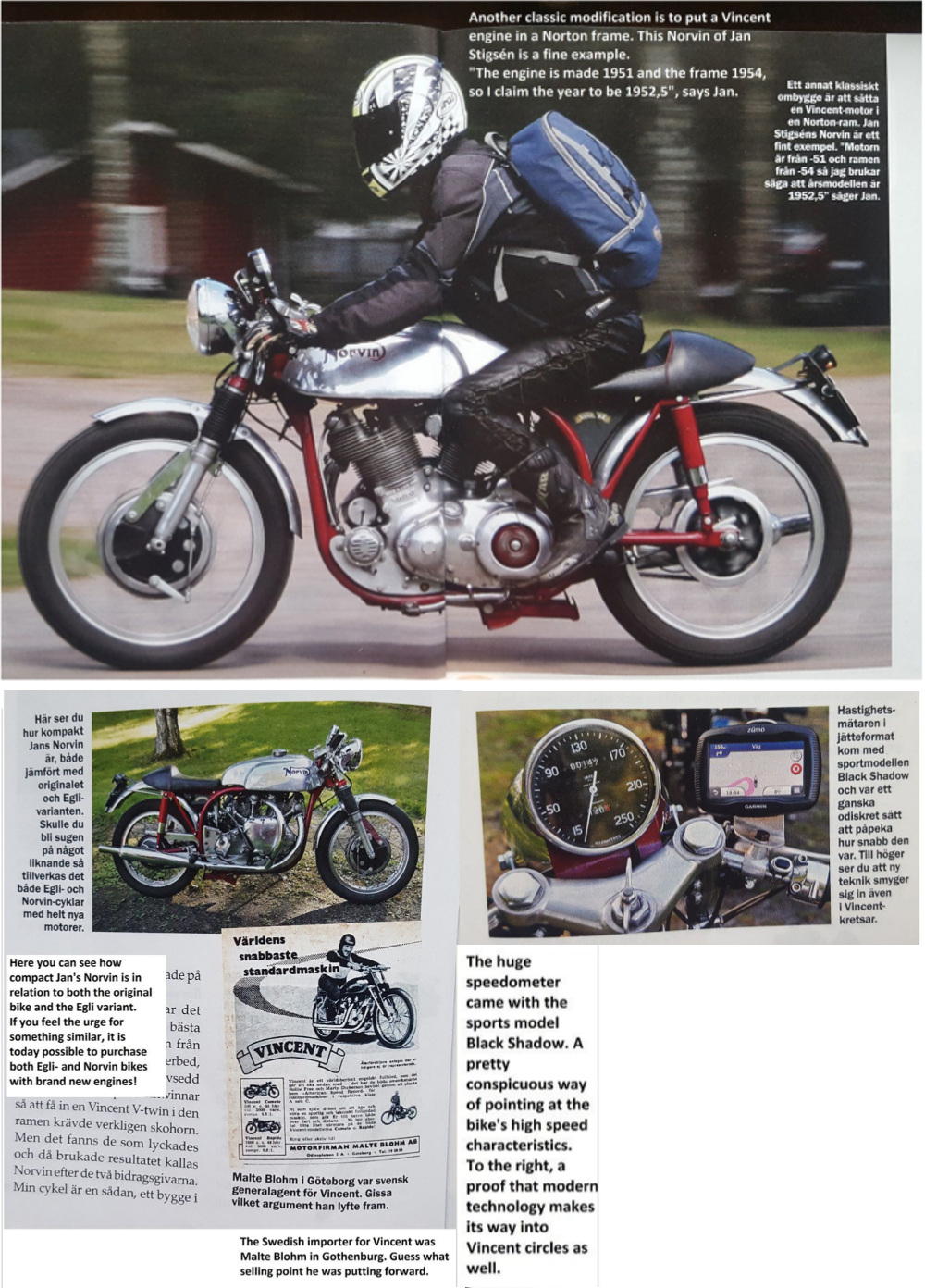
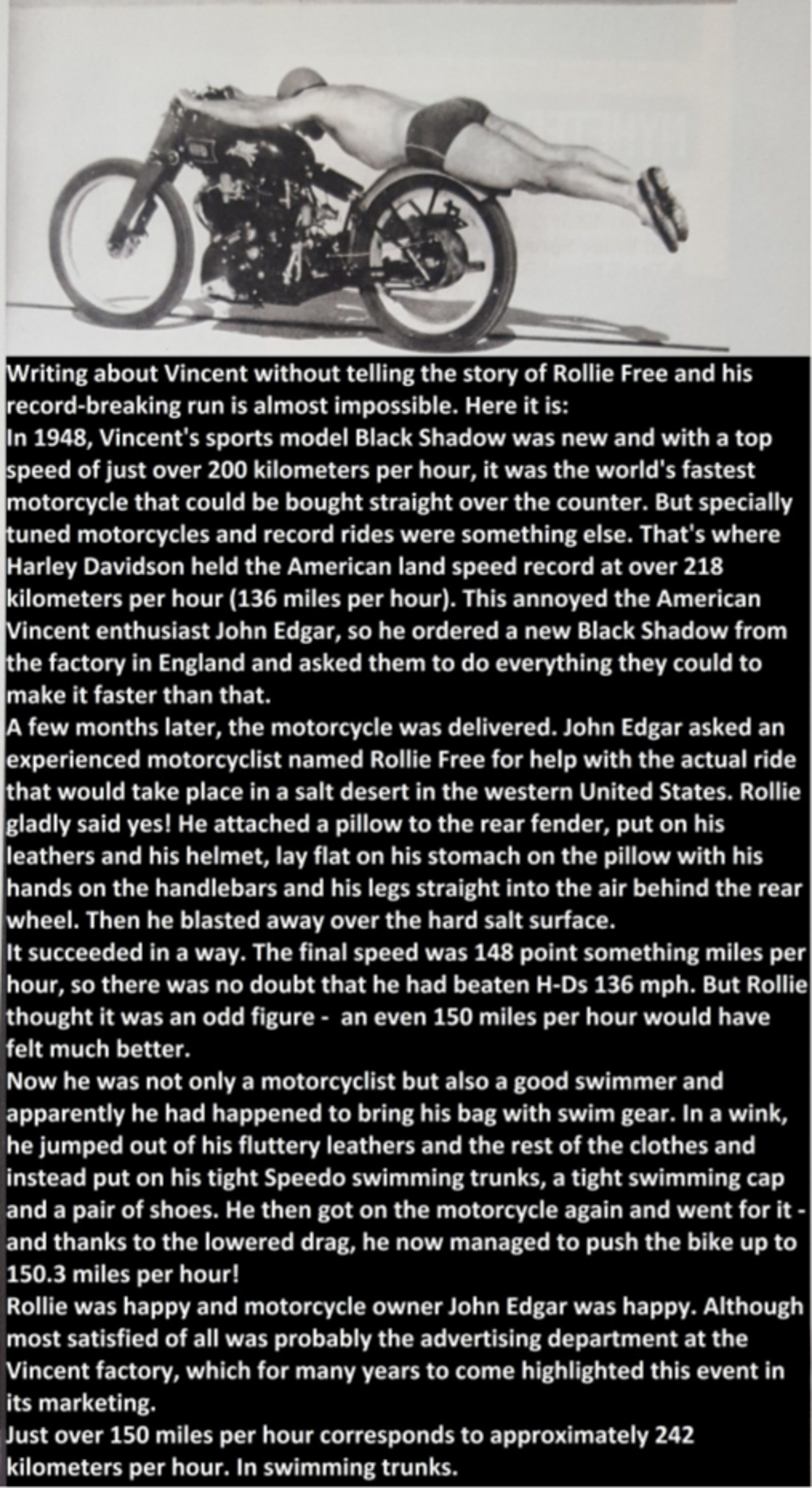
| Brief facts on Vincent's history 1924-28: The British company HRD builds motorcycles with a focus on sports and racing. 1928: Philip Vincent buys HRD and starts making motorcycles named Vincent HRD. He buys engines, but the frames are self-made with both front and rear suspension. The rear suspension consists of a separate rear frame that is hinged at the bottom and has a set of horizontal springs and shock absorber at the top. 1934: First own engine, a single-cylinder 500. 1936: The first two-cylinder engine, a 1,000-cubic-meter V-twin with 47.5 degrees between the cylinders. 1946: New 1,000 cc V-twin in a new frame. The engine now has 50 degrees between the cylinders and has the rear chain on the right side. The frame is an innovative design that largely lacks the ordinary frame. The middle part consists of the engine and a sturdy oil tank that together constitute a stressed member of the frame. The front fork and a rear frame are of the same type as previously and are attached to the engine package. And on top of all there is a fuel tank and saddle. 1948: New single-cylinder 500-cc engine which is basically a V-engine without the rear cylinder. The frame of the 500-engine differs in some respects but is generally similar to that of the 1,000 cc bikes. Vincent's front fork Girdraulic is added as an alternative to the old parallelogram fork. 1949: The name of the motorcycle brand is changed during the year from Vincent HRD to just 1952: Best year for Vincent in terms of sales. 1955: Falling motorcycle sales in the world lead to a new concept at Vincent where the motorcycles get fiberglass covers that protect the driver from weather and wind. No real success. Late 1955: Production of Vincent motorcycles ceases. Here is a list of some of the more famous models: Series B (1946-50): Series C (Girdraulic front fork, 1948-55 partly parallel to Series B): Series D (enclosed model, 1955): |
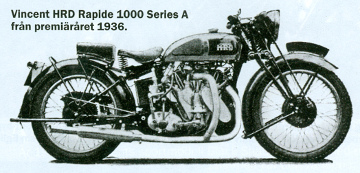
Vincent HRD Rapide 1000 Series A from the 1936 premiere year |
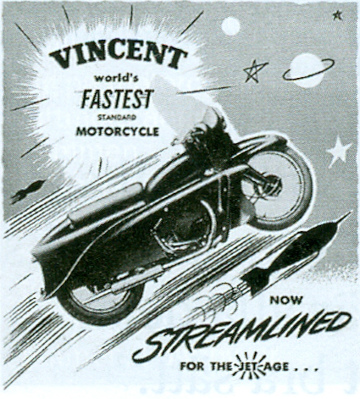
In 1955, the last production year, the Vincents were dressed in full fiberglass cover. |